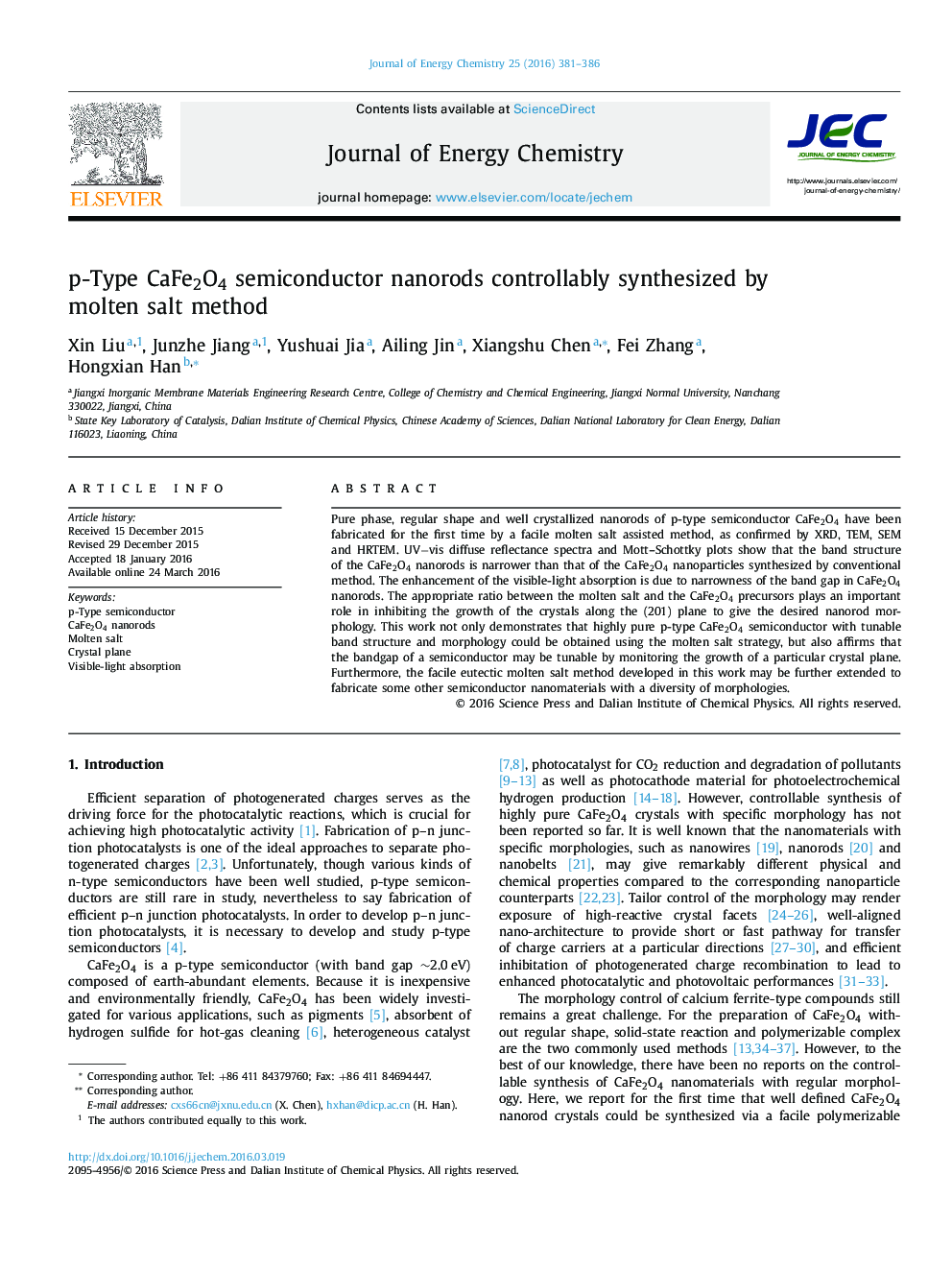| Article ID | Journal | Published Year | Pages | File Type |
|---|---|---|---|---|
| 63686 | Journal of Energy Chemistry | 2016 | 6 Pages |
Pure phase, regular shape and well crystallized nanorods of p-type semiconductor CaFe2O4 have been fabricated for the first time by a facile molten salt assisted method, as confirmed by XRD, TEM, SEM and HRTEM. UV−vis diffuse reflectance spectra and Mott–Schottky plots show that the band structure of the CaFe2O4 nanorods is narrower than that of the CaFe2O4 nanoparticles synthesized by conventional method. The enhancement of the visible-light absorption is due to narrowness of the band gap in CaFe2O4 nanorods. The appropriate ratio between the molten salt and the CaFe2O4 precursors plays an important role in inhibiting the growth of the crystals along the (201) plane to give the desired nanorod morphology. This work not only demonstrates that highly pure p-type CaFe2O4 semiconductor with tunable band structure and morphology could be obtained using the molten salt strategy, but also affirms that the bandgap of a semiconductor may be tunable by monitoring the growth of a particular crystal plane. Furthermore, the facile eutectic molten salt method developed in this work may be further extended to fabricate some other semiconductor nanomaterials with a diversity of morphologies.
Graphical abstractWell crystallized p-type CaFe2O4 semiconductor nanorods with narrower bandgap compared to the corresponding nanoparticles have been synthesized for the first time by eutectic molten salt assisted method.Figure optionsDownload full-size imageDownload as PowerPoint slide
